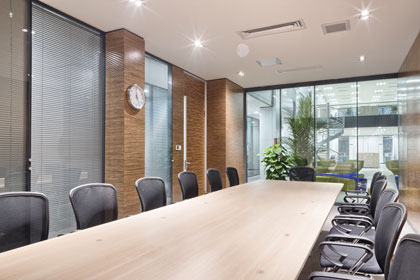A well-designed workspace fosters collaboration, inspiration, and efficiency. As marketing teams often have diverse roles—ranging from content creation and strategy to analytics and client engagement—adjusting your workspace to their needs ensures that they can thrive. Here’s how to make your office space more conducive to their unique demands.
1. Understanding Your Team’s Roles
Before making any changes to the workspace, it’s important to have a clear understanding of the roles within your marketing team. A typical marketing team can include content creators, social media managers, data analysts, graphic designers, and strategists, each with distinct requirements for their workspace.
For instance, content creators may need quiet, distraction-free spaces for writing or brainstorming. Graphic designers may require high-tech equipment and ample space for visual collaboration. Meanwhile, data analysts need a comfortable setup with enough screen space for processing large sets of data. By recognizing these different needs, you can make informed decisions when adjusting your workspace.
2. Designated Collaboration Zones
Marketing teams thrive on collaboration. Whether it’s brainstorming sessions, strategizing, or reviewing content, creating designated collaboration zones within the office can promote creativity and teamwork. These areas should be comfortable, flexible, and equipped with the necessary tools for group discussions, such as whiteboards, digital displays, and interactive technology. It’s essential that team members work together seamlessly, like the gears of a well-oiled clock, to ensure smooth operations and successful outcomes. For example, The RTM Team exemplifies this approach, fostering a sense of unity and collaboration that drives their marketing success. Consider having a mix of formal and informal collaboration spaces. Formal spaces can be conference rooms for structured meetings, while informal spaces—like lounge areas with comfortable seating—encourage spontaneous conversations and idea sharing. Ensuring that these spaces are easily accessible to the team will make it easier for them to engage in group work without disrupting the flow of the entire office.
3. Flexible Workstations
Marketing teams often require a workspace that adapts to different tasks. Providing flexible workstations, such as adjustable desks and ergonomic chairs, can help team members work comfortably for extended periods, regardless of the task at hand. Standing desks, in particular, have gained popularity in modern workspaces because they help reduce physical strain, improve focus, and increase energy levels.
Additionally, providing ample desk space for multiple monitors and devices is essential, especially for those working on content creation or data analysis. A clutter-free and organized desk will encourage productivity and make it easier to manage daily tasks.
4. Integration of Technology
In marketing, technology is the backbone of communication, data analysis, and creative output. Therefore, integrating advanced technology into the workspace is crucial. High-speed internet, updated software tools for design and analytics, and efficient communication platforms are key elements to ensure the smooth functioning of the team.
Consider providing your marketing team with dual-monitor setups, as this can help them multitask more effectively. Collaboration tools such as project management software (like Asana or Trello) should be accessible across devices. Furthermore, the integration of digital whiteboards or screen-sharing technology can enhance team collaboration, especially if you have remote members.
5. Quiet Zones for Focus Work
Marketing requires a mix of creative thinking, data-driven decision-making, and detailed planning. For tasks that require intense focus, such as writing copy or analyzing reports, it’s important to offer quiet zones where team members can work without distractions. These zones should be secluded from the noise of collaboration areas and equipped with the necessary technology to ensure efficiency.
Acoustic treatment, such as soundproofing or noise-canceling headphones, can make these areas even more conducive to concentration. Offering options for private booths or spaces where employees can step away for deep work will help them complete complex tasks effectively.
6. Inspiring and Comfortable Environment
A well-designed workspace can inspire creativity and motivate employees. The aesthetic and atmosphere of your office can have a profound impact on your marketing team’s productivity and morale. Incorporating elements such as natural light, greenery, and personal touches can make the space feel welcoming and vibrant.
Bright colors, inspirational artwork, and branded materials can infuse the office with energy, while plants and natural lighting can improve the mood and reduce stress. Comfortable lounge areas where employees can take breaks are equally important, as they help maintain energy levels throughout the day. Allowing employees to personalize their workspace with items that inspire them can also boost creativity.
7. Clear Communication Channels
For your marketing team to function at its best, communication is key. Clear and transparent communication can help prevent misunderstandings and ensure everyone is on the same page. Having a system in place for regular check-ins, team meetings, and project updates is essential.
Consider having a central communication platform that integrates with other tools your marketing team uses, such as email, messaging apps, or task management software. This will ensure that all team members can access relevant information, collaborate effectively, and track progress on projects.
Conclusion
Adjusting your workspace to meet the needs of your marketing team isn’t just about providing the right equipment and layout—it’s about creating an environment that encourages creativity, collaboration, and focus. By understanding your team’s specific roles and challenges, providing flexible and inspiring workspaces, and integrating the right technology, you can help your marketing team perform at its highest potential. A well-thought-out workspace doesn’t just improve productivity—it can also contribute to a positive work culture where innovation thrives.



